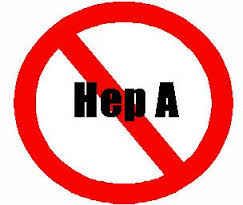Someone told me today that tomatoes are in. Lots of people are canning. This morning I had two friends ask me about the safety of recipes and how long they can keep the stuff they canned. During one of the conversations I got this admission ‘oh, yeah, so, I didn’t actually process the salsa, do you think that’s why I’m seeing discoloration?’
I dunno, maybe.
I stick with the evidence-based, data supported recipes that my friend Elizabeth Andress at University of Georgia’s National Center for Home Food Preservation evaluates. 
Canning isn’t really a fad, but revisiting generations old techniques of food preservation is a thing right now. And it can go wrong if not carried out with safety as a focus.
That’s why regulations and enforcement exist, including making canned goods in a safe environment and having some science behind the recipe and process. Just like what a farm stand owner in NY is encountering, according to the Watertown Daily Times.
Rhonda M. Fletcher has been selling produce from her two-acre garden and canned and baked goods from her kitchen for nearly 10 years in front of her house on County Route 28.
This week an agent from the New York State Department of Agriculture and Markets stopped by Fletcher’s Garden Goods and told Ms. Fletcher her canned goods and baked goods had to be removed from her shelves.
Word of the action caused a bit of a firestorm among Ms. Fletcher’s friends on Facebook. Many of the posts pointed out that most farm stands, including those run by the area’s Amish population, have been selling canned goods for years without consequence.
Representatives of the Agriculture Department in response to emailed questions said there is no crackdown on farm stands.
“During an investigation of Fletcher’s Garden Goods on August 8, 2017, a Food Safety Inspector with the Department of Agriculture and Markets seized several canned foods being sold at the farm stand,” the email stated. “If processed incorrectly, these products pose a serious risk of botulism. They were also being sold without the required documentation and license. The Department provided contact information to the owner of the farm stand to assist them in acquiring the appropriate license and documentation.”
Ms. Fletcher said she was aware that her kitchen was not certified, but that she had been selling canned and baked goods to her customers, many of whom are her friends, for years.
“I understand he is doing his job. That’s his job,” Ms. Fletcher said. “I’ve been doing this for over 10 years. My clientele trust me and look forward to my stand opening every year.”
“They trust me,” she said. “They don’t think I am going to poison them.”
Fletcher’s Garden Goods remains open for business, but has only fresh produce for sale.
Ms. Fletcher said she is considering getting her kitchen certified for jams but thinks the process for getting certified for canned goods is too involved.
Following grandma’s recipe from the 1930s might be okay, or maybe following it creates the right environment for bot toxin formation. I’m wary of the amateur canned goods (because everyone’s an expert). Knowing the hazards and how to reduce risk is what I look for in a food vendor though – and having regulators around to check protects folks.
 But Steve Hilton, a tech entrepreneur who was once chief adviser to former Prime Minister David Cameron of Britain, added that role to his résumé in June.
But Steve Hilton, a tech entrepreneur who was once chief adviser to former Prime Minister David Cameron of Britain, added that role to his résumé in June.







